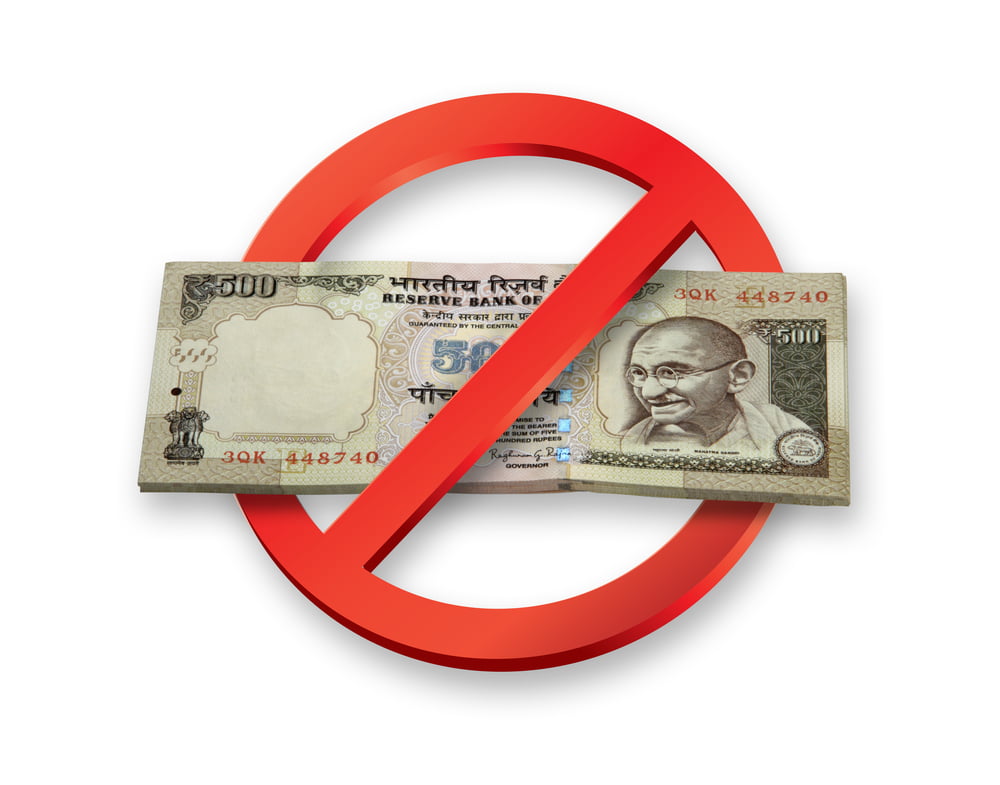Most people with an interest in finance are familiar with India’s demonetization plans. A few months ago, the government decided to make certain bills invalid overnight and replace them with higher-denomination notes. Considering how India mostly uses cash to store wealth rather than banks, that move caused a lot of civil unrest and ultimately led to more problems than solutions. The latest report from the Reserve Bank of India acknowledges that the entire plan was a “complete failure.” Rest assured, this will not be the last demonetization effort in India or elsewhere. It goes to show why Bitcoin is a far better solution than other forms of money.
India’s Demonetization Attempt is a Failure
The plan by the Indian government to cause a massive wave of demonetization would not end well. Recalling 500 and 1,000 rupee notes late last year after an overnight decision was bound to cause a lot of problems. The result was quite worrisome: people spent hours, if not days, waiting in line at ATMs to withdraw their money. Unfortunately, a large portion of bank ATMs never received the new bills or could not keep up with demand. Civil unrest was the only logical outcome, and the Reserve Bank of India has faced a lot of scrutiny ever since.
Granted, the RBI tried to resolve some of these issues as quickly as possible. These efforts have been mostly in vain, despite 98.96% of recalled notes having been returned to the bank over the past few months. At the same time, the bank effectively invalidated 86% of the country’s circulating currency overnight, which was a very debatable decision. In fact, it is still one of the most unusual decisions a central bank has made to date, and not necessarily a moniker RBI wants to be associated with.
The purported reason for this large-scale demonetization effort was to erode black money and reduce the amount of cash used across India. Considering how mobile and contactless payments are on the rise in the country, that was a seemingly solid idea. The poor execution of this plan, however, has caused so much friction between consumers and the government that it is doubtful the damage can ever be repaired. Although the government claims its efforts have had the desired effect, the average person may not necessarily agree.
One thing that stands out is that though the RBI successfully gained some undeclared bills, it also gave up a lot of money to print these new notes. The net result of the entire venture is clearly in the red, which could not have been the objective from day one. That is, unless its intention was to launder some of its own black money, as has been declared by the opposition party in India. Indeed, there may have been more morally dubious reasons for this decision.
Congress Vice-President Rahul Gandhi, for one, is not happy about the demonetization effort. He claims it represents a “colossal failure, which cost innocent lives and ruined the local economy.” Those are some serious, though understandable accusations. In the end, bank customers were forced to deposit money into their own accounts, giving the RBI more economic power than ever before. By not allowing users to withdraw their funds accordingly, the RBI effectively controlled all of India’s economy for a few months. There are rumors that tax evaders made deals with bank officials to exchange old currency, according to the Hindustan Times.
Demonetization efforts like these are power grabs by financial institutions. They also highlight why Bitcoin is the only currency that should matter to everyone, as it cannot be controlled by banks. Traditional financial tools – including banks – are used for tax evasion, fraud, and who knows what else. When things get too messy, the average consumer will pay the price. The RBI set a very dangerous precedent.

